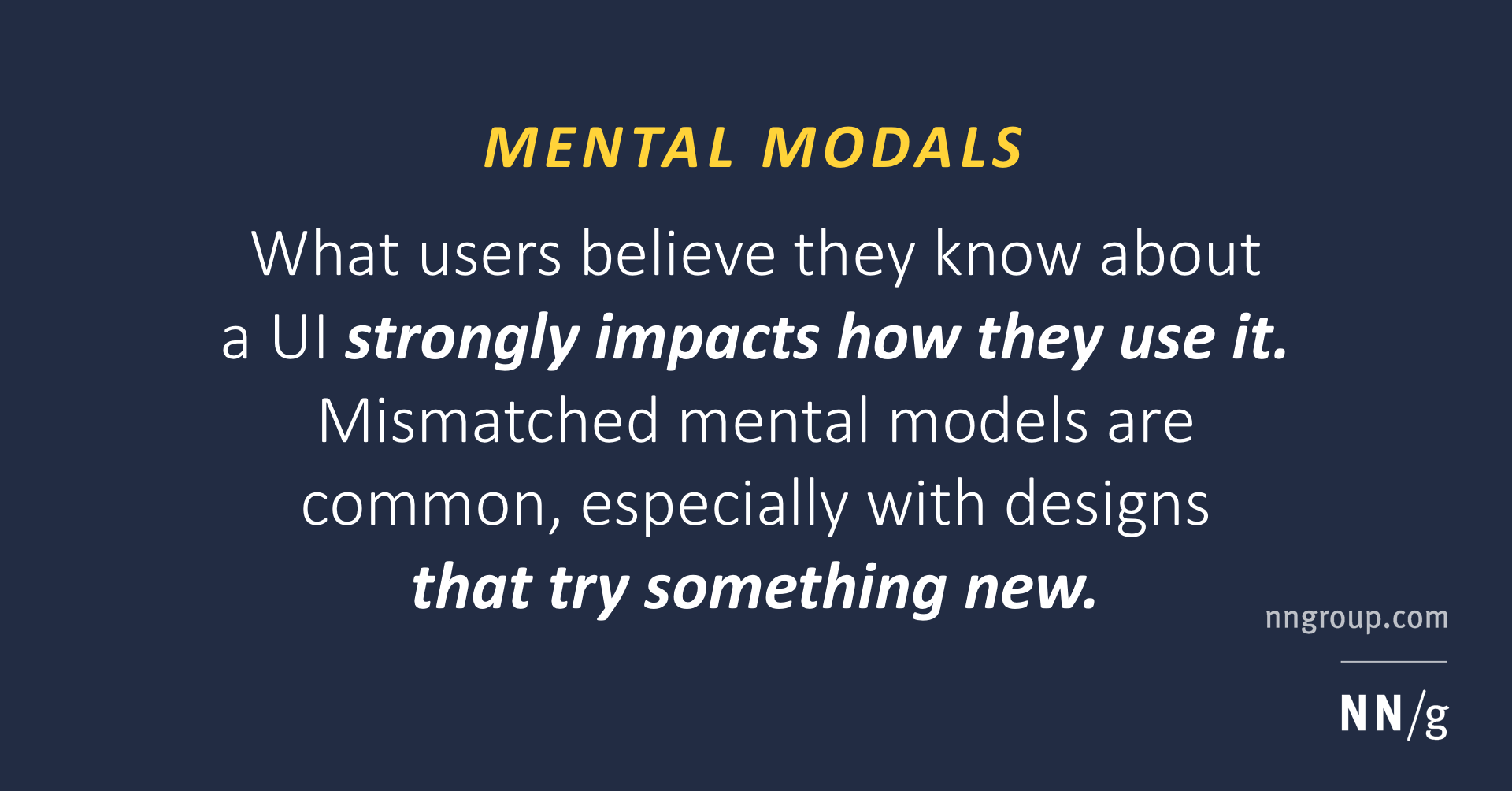
How to use them to better understand users' expectations.
Hi everyone, Kevin here.
I recently had a great conversation with Daniele Catalanotto about what are mental models and how to use them in a simplified way in our design process.
This conversation is part of a series of Podcasts for Design & Critical Thinking with Daniele (hold in French). Daniele is a Service Designer in Switzerland and is the founder of the Swiss Innovation Academy and the Service Design Magazine.
For those of you who don't speak French –or just don't want to listen to us thinking out loud– here's the summary of this conversation in English. Also, find below a video version, available on YouTube with automatic-translation subtitles.
🌟 Subscribe on YouTube to be notified when new episodes are out!
What are “mental models”?
Mental models are an explanation of how a person sees the world and how it works. The way I believe something works has a huge impact on how I interact with it.
What is a simplified mental model for designers?
I use a simplified type of mental model in order to, for example, understand what’s the mental model for a certain task is. I ask employees: “If you had to explain your work by choosing another profession that is similar to yours which one would it be? Would you be a doctor? A teacher? A firefighter?”
If a user sees himself as a firefighter in specific circumstances, this will helps create solutions and services that fit that specific mental model in the right context.
Context and time-specific mental models
Mental models are specific in context and time. A manager can use a mental model of the firefighter when it comes to handling clients, but can then switch to the mental model of the “mom” when it comes to handling team members.
Explore and be critical
If you want an in-depth view of the power of mental models you can check out the book by Indy Young. Also on her website, you’ll find tons of great resources on the subject.






Discussion